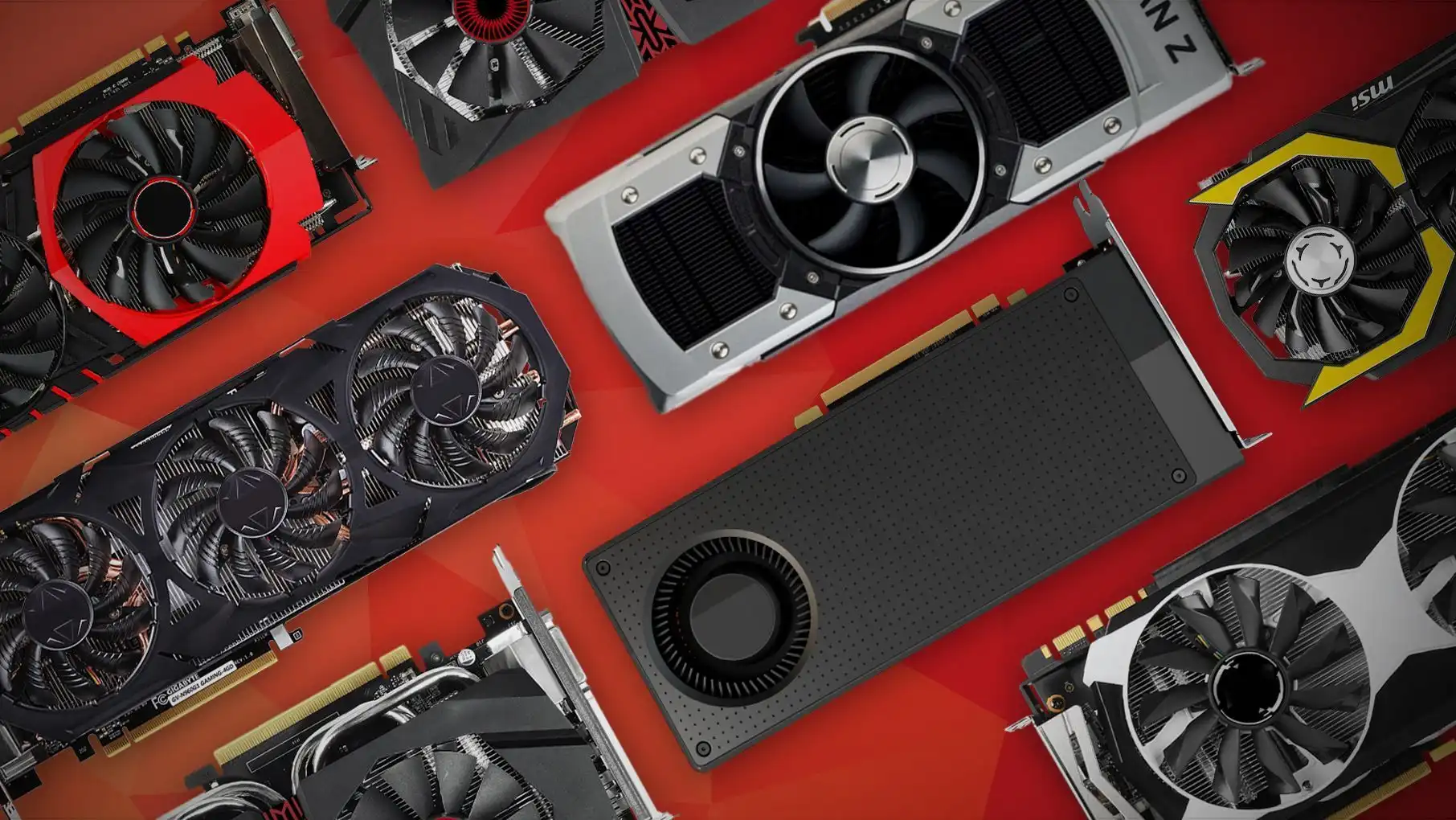A Graphics Processing Unit (GPU) is a specialized electronic circuit designed to accelerate the creation of images in a frame buffer intended for output to a display device. They are essential in rendering images, videos, and animations in 2D or 3D for display. As the demand for higher graphics performance has surged with advancements in gaming, professional graphics applications, and artificial intelligence, GPUs have become more sophisticated and powerful. This article aims to provide a comprehensive understanding of GPUs, their types, applications, and future prospects, catering to both novice and experienced users.
Understanding GPUs
Difference Between CPU And GPU
While both CPUs and GPUs are critical components of modern computing, they serve different purposes. The CPU, or Central Processing Unit, is the brain of the computer, handling general-purpose tasks and managing the overall system. In contrast, the GPU is specialized for parallel processing, excelling in tasks that require simultaneous computations, such as rendering graphics and processing large data sets. This specialization allows GPUs to perform certain tasks much faster than CPUs.
Brief History And Evolution Of GPUs
The history of GPUs dates back to the late 1970s and early 1980s with the development of simple graphics chips used in video game consoles and arcade machines. Over the decades, GPUs have evolved from basic 2D accelerators to complex processors capable of handling 3D graphics and massive parallel processing tasks. Major milestones include the introduction of the first 3D graphics cards in the 1990s, the development of programmable shaders in the early 2000s, and the recent advancements in AI and machine learning capabilities.
How GPUs Work
The architecture of a GPU is designed to handle parallel processing with a high degree of efficiency. Unlike CPUs, which have a few cores optimized for sequential serial processing, GPUs consist of thousands of smaller, more efficient cores designed for handling multiple tasks simultaneously. This architectural difference allows GPUs to excel at tasks that require large-scale data processing, such as graphics rendering and complex mathematical computations.
Parallel Processing Capabilities
Parallel processing is the key strength of GPUs. By dividing tasks into smaller, simultaneous operations, GPUs can process large amounts of data much faster than CPUs. This capability is particularly beneficial for tasks like rendering images and videos, where multiple pixels can be processed at the same time, and for machine learning, where large datasets can be analyzed in parallel.
Key Components (Cores, Memory, Etc.)
The primary components of a GPU include its cores, memory, and memory bandwidth. The cores, often referred to as CUDA cores in NVIDIA GPUs, are the processing units that handle computations. Memory, or VRAM, is used to store textures, frame buffers, and other data needed for rendering. Memory bandwidth is crucial as it determines how quickly data can be transferred to and from the GPU’s memory, affecting overall performance.
Types Of GPUs
Integrated GPUs
Integrated GPUs are built into the same chip as the CPU and share the system’s memory. They are cost-effective and consume less power, making them ideal for everyday computing tasks such as web browsing, office applications, and video playback. However, their performance is limited compared to dedicated GPUs, making them less suitable for demanding tasks like high-end gaming and professional graphics work.
Dedicated GPUs
Dedicated GPUs, also known as discrete GPUs, are separate hardware components with their own dedicated memory. These GPUs offer significantly higher performance than integrated GPUs, making them ideal for gaming, 3D rendering, video editing, and other graphics-intensive applications. They are typically more expensive and consume more power, but the performance gains justify these costs for users with demanding graphics needs.
Professional GPUs (Workstation GPUs)
Professional GPUs, or workstation GPUs, are designed for high-performance computing tasks in professional environments. These GPUs offer features such as enhanced precision, stability, and performance for applications like CAD (Computer-Aided Design), 3D modeling, scientific simulations, and medical imaging. They are optimized for tasks that require high accuracy and reliability, and often come with specialized drivers and support for professional software.
Major GPU Manufacturers
Overview Of Leading Companies (NVIDIA, AMD, Intel)
The GPU market is dominated by three major manufacturers: NVIDIA, AMD, and Intel. NVIDIA is well-known for its high-performance GPUs used in gaming and professional applications. AMD provides competitive alternatives with a strong focus on price-to-performance ratio. Intel, traditionally known for CPUs, has also entered the GPU market with its Intel Xe graphics, aiming to offer integrated and discrete solutions.
Key Product Lines And Innovations
NVIDIA’s key product lines include the GeForce series for gaming and the Quadro series for professional workstations. Their innovations in real-time ray tracing and AI have set new standards in the industry. AMD’s Radeon series targets gamers and professionals, with innovations like the RDNA architecture enhancing performance and efficiency. Intel’s Xe graphics line is still emerging but promises integrated and discrete solutions with a focus on performance and power efficiency.
Market Share And Competition
NVIDIA currently holds the largest market share in the GPU industry, particularly in the high-performance segment. AMD competes closely, especially in the budget and mid-range markets, offering competitive performance at lower prices. Intel, a newcomer to the discrete GPU market, aims to leverage its extensive experience in integrated graphics to capture a significant share of the market.
Applications Of GPUs
Gaming
In gaming, GPUs play a critical role in rendering detailed graphics, providing smooth frame rates, and enhancing the overall gaming experience. Advanced features like real-time ray tracing, which simulates the physical behavior of light, offer lifelike visuals that were previously unattainable. High-performance GPUs enable gamers to enjoy the latest titles with maximum visual fidelity and responsiveness.
AI And Machine Learning
GPUs are indispensable in AI and machine learning due to their parallel processing capabilities. They accelerate the training of complex neural networks, allowing researchers and developers to process large datasets and perform intricate computations efficiently. Applications range from natural language processing to autonomous driving, where GPUs enable rapid advancements and practical implementations.
Video Editing And Production
In video editing and production, GPUs accelerate rendering and encoding processes, reducing the time required to produce high-quality videos. They handle tasks such as real-time playback of high-resolution footage, applying complex effects, and exporting finished projects. This efficiency is crucial for professionals in the film, television, and digital media industries.
Cryptocurrency Mining
Cryptocurrency mining involves solving complex mathematical problems to validate transactions on a blockchain network. GPUs, with their high computational power and parallel processing capabilities, are well-suited for this task. The demand for GPUs in mining has significantly impacted their availability and pricing in the market.
Other Applications
Beyond gaming, AI, video editing, and mining, GPUs are used in scientific simulations, medical imaging, and other fields requiring intensive computational power. In scientific research, they enable simulations of physical phenomena, while in medicine, they assist in analyzing complex imaging data for diagnostics and treatment planning.
Choosing The Right GPU
Factors To Consider (Performance, Price, Compatibility)
When choosing a GPU, consider factors such as performance, price, and compatibility with your system. Performance is determined by the GPU’s core count, clock speed, and memory bandwidth. Price varies based on these specifications and the intended use case. Compatibility with your system’s CPU, motherboard, and power supply is crucial to ensure optimal performance and stability.
How To Read GPU Specifications
Understanding GPU specifications is essential for making an informed purchase. Key specs include the number of cores, clock speed, memory size and type, and memory bandwidth. Benchmarks and reviews provide insights into real-world performance, helping you choose a GPU that meets your needs.
Recommendations For Different Needs (Gaming, Professional Use, Casual Use)
For gaming, a mid to high-end GPU with ample memory and support for the latest technologies is ideal. Professional users should opt for workstation GPUs with enhanced precision and reliability. Casual users can benefit from integrated or entry-level dedicated GPUs that balance performance and cost.
Future Of GPUs
Emerging Technologies (Ray Tracing, AI Integration)
Emerging technologies like real-time ray tracing and AI integration are shaping the future of GPUs. Ray tracing enhances visual realism by accurately simulating light behavior, while AI integration improves performance and enables new applications. These advancements are setting new standards for both gaming and professional graphics.
Predictions For The GPU Market
The GPU market is expected to grow as demand for high-performance computing continues to rise. Innovations in AI, virtual reality, and other fields will drive the development of more powerful and efficient GPUs. Market competition will intensify, leading to more choices and better value for consumers.
Impact Of Advancements On Various Industries
Advancements in GPU technology will impact various industries, from gaming and entertainment to healthcare and scientific research. Enhanced graphics capabilities will lead to more immersive experiences, while increased computational power will enable new breakthroughs in AI, data analysis, and other fields.
Conclusion:
GPUs are at the heart of modern graphics processing, powering everything from video games to scientific research. Understanding their architecture, types, applications, and future trends is essential for making informed decisions about their use. As technology continues to advance, GPUs will play an increasingly critical role in shaping the digital landscape, driving innovation and enabling new possibilities across various industries.



